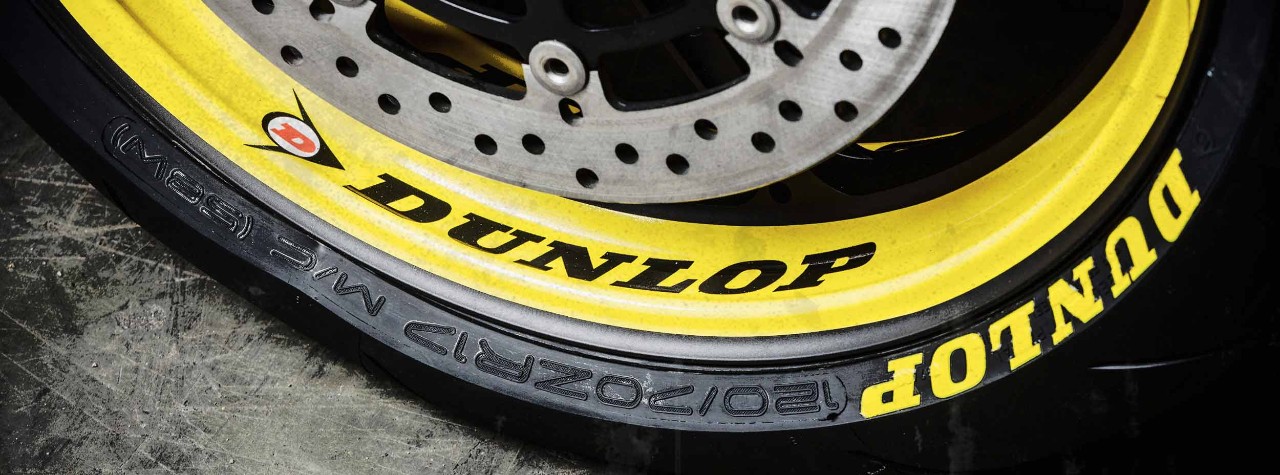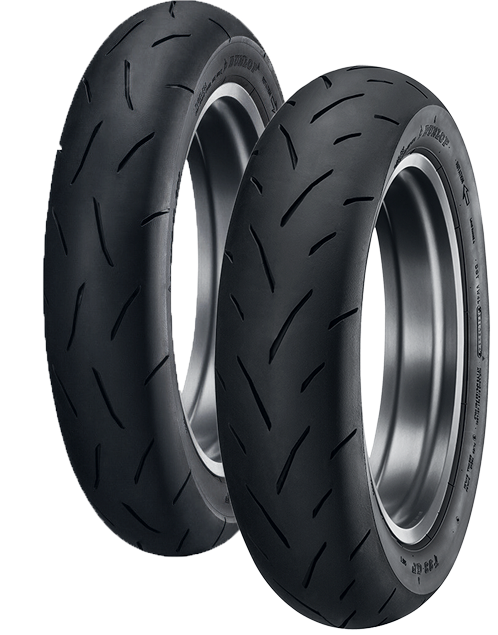Motorcycle Tyre Guide to Increase Tyre Durability and Performance
Motorcycle Tyre Guide to Increase Tyre Durability and Performance
Blog Article
Explore the Value of Picking the Right Tyres With Our Informative Motorcycle Tire Guide
Picking the ideal tires is crucial for any Motorcycle fanatic. The right tyres improve performance, enhance safety and security, and add to overall comfort throughout adventures. Understanding the various types, sizes, and maintenance practices can considerably affect your riding experience. As cyclists encounter varied terrains and conditions, recognizing exactly how to pick the best tyres becomes critical. What elements should be thought about to guarantee peak performance? The responses await in the following sections.
Recognizing Various Kinds Of Motorcycle Tyres
Selecting the best type of Motorcycle tire might seem frustrating, understanding the various choices offered can significantly enhance a biker's experience. Motorcycle tires are mostly classified into 3 types: touring, sporting activity, and off-road. Touring tires are created for long-distance travel, supplying longevity and convenience on highways. These tires include a walk pattern that offers excellent grip and stability, making them appropriate for numerous climate conditions.Sport tyres, on the various other hand, prioritize performance and handling, featuring a softer rubber substance that boosts grasp during cornering. They are excellent for bikers that delight in perky adventures on twisty roads or racetracks. Off-road tyres are customized for rugged surface, with an aggressive walk pattern that supplies grip on loose surfaces like dust or gravel.
Examining Your Riding Style and Requirements
When assessing riding style and requires, comprehending just how various riding problems affect performance is vital. This analysis can guide riders in picking the ideal tyre kinds that line up with their specific requirements. By thinking about variables such as surface and climate, bikers can make enlightened choices for suitable safety and security and experience.
Riding Conditions Influence
As riders browse various terrains and weather, comprehending how these elements affect Motorcycle efficiency ends up being crucial. Different riding atmospheres, such as wet, completely dry, or off-road, demand details tire features to assure security and suitable handling. Damp conditions require tires that use better grasp to prevent hydroplaning, while off-road riding demands robust step patterns for traction on loosened surfaces. Furthermore, temperature variations can influence tyre stress and efficiency, requiring changes based on the conditions faced. Riders have to evaluate their typical paths and environments when choosing tyres, as the ideal selection can substantially improve their riding experience, assuring both comfort and safety and security in diverse scenarios. Matching tyres to riding conditions is vital for reliable Motorcycle efficiency.
Tire Types Overview
Understanding the different sorts of Motorcycle tires is vital for cyclists intending to improve their efficiency and safety and security. Each tyre type caters to particular riding styles and problems. Sport tyres, developed for high grip and dexterity, are optimal for hostile riding and track days. Visiting tyres focus on longevity and comfort, making them ideal for long-distance trips. Off-road tires feature much deeper footsteps for traction on unequal surface areas, attracting journey seekers. Cruiser tyres provide a smooth trip, often highlighting aesthetics for cruisers and choppers. Dual-sport tyres blend features of both on-road and off-road tyres, serving functional riders. Assessing private riding styles and needs guarantees that the appropriate tire kind is selected, inevitably improving general riding experience and safety.
The Impact of Tyre Size on Efficiency
Tire dimension significantly influences a bike's overall performance, affecting stability, traction, and handling. The diameter and width of tires can especially change a bike's dynamics. Bigger diameter tires can improve high-speed performance, providing smoother rides and boosted stability throughout straight-line traveling. They might additionally require even more initiative for fast maneuvering. Alternatively, narrower tires often tend to use much better agility and responsiveness, making them suitable for dilemmas and intricate riding conditions.Additionally, the facet ratio, which connects to the tire's height, plays a crucial role in efficiency qualities. A reduced profile tire may improve cornering security but can compromise comfort due to decreased cushioning. Eventually, picking the suitable tire size lines up with the cyclist's preferences and planned use, whether for sport, touring, or off-road riding. Comprehending these subtleties assurances peak efficiency and enhances the general riding experience.
Walk Patterns and Their Significance
Walk patterns on Motorcycle tyres play an essential function in determining performance, affecting aspects such as grasp and handling. Different sorts of walk designs satisfy numerous climate condition and terrains, ensuring suitable traction and stability. Comprehending these patterns is very important for motorcyclists seeking to enhance their Motorcycle's efficiency and safety.
Types of Footstep Patterns
The efficiency of a bike is significantly influenced by the kind of step pattern on its tires. Numerous step patterns offer particular features, satisfying various riding conditions. Glossy tires include a smooth surface area, perfect for completely dry problems and auto racing, giving maximum grip. On the other hand, tyres with deep grooves and complicated patterns are made for off-road or damp conditions, enhancing water displacement and traction. Some tread designs, such as dual-purpose tires, strike an equilibrium for both on-road and light off-road usage. motorcycle tyre guide. In addition, sporting activity tires frequently possess an extra hostile walk pattern, enhancing cornering stability. Understanding these types of tread patterns helps cyclists pick the proper tyres for their intended riding experiences and environmental problems
Influence on Performance
Choosing the appropriate step pattern substantially affects a motorcycle's performance in numerous riding problems. Walk patterns are developed to optimize grasp, taking care of, and security, straight impacting cornering capability and braking performance. As an example, a much more aggressive step design enhances grip on unequal surface areas, making it suitable for off-road riding. On the other hand, a slicker tread pattern advertises smoother trips on smooth roads, reducing moving resistance and improving gas efficiency. The deepness and arrangement of grooves likewise play a vital function, permitting effective water variation and reducing hydroplaning threats. Ultimately, choosing an appropriate walk pattern customized to particular riding designs and environments guarantees improved control, safety, and total riding experience, highlighting the importance of this decision for Motorcycle lovers.
Weather and Surface Viability
Weather and terrain types greatly influence the viability of Motorcycle tyre walk patterns. In damp problems, tyres with deeper grooves and certain patterns are essential to carry water away and lower the risk of aquaplaning. Alternatively, a flatter tread design offers suitable surface area call for dry roads, improving grasp and stability. For off-road riding, knobby tyres supply raised grip on loosened surfaces like mud and gravel. Each tread pattern offers a distinctive objective; as a result, choosing the proper tire is very important for efficiency and safety. Motorcyclists must consider their regular riding setting-- whether city, country, or differed surfaces-- to assure their tires can effectively manage the conditions, promoting a more secure and much more pleasurable riding experience.
Preserving Your Motorcycle Tyres for Longevity
While Motorcycle enthusiasts frequently concentrate on performance and looks, ignoring tire upkeep can cause early wear and harmful riding conditions. Frequently checking tyre stress is essential, as both under-inflation and over-inflation can adversely affect taking care of and grasp. In enhancement, preserving the correct stress can improve fuel performance and total performance.Routine evaluations for signs of damages, such as fractures or punctures, additionally play an essential duty in prolonging tyre life. Maintaining tyres clean from particles and pollutants warranties peak grip. Revolving tyres regularly aids distribute wear equally, lengthening their lifespan.Proper placement and harmonizing of the wheels are needed for learn this here now maintaining security and decreasing irregular wear. Finally, adhering to the manufacturer's suggestions for tire replacement intervals assures that riders are furnished with safe and dependable tyres. By prioritizing these maintenance practices, motorcyclists can enjoy a more secure and longer-lasting riding experience.
Recognizing Tyre Use and When to Change
To assure optimal security and efficiency, cyclists must be alert in acknowledging tire wear and recognizing when to change their tires. Tire walk deepness is an important indication; a deepness of 1.6 mm or much less typically indicates the demand for substitute. Motorcyclists must also check out the tyres for irregular wear patterns, which can recommend positioning or suspension concerns. Splits, protrudes, or noticeable cables are major signs of wear and tear and warrant immediate replacement.Monitoring tire stress is essential as under-inflation can accelerate wear and compromise security. Additionally, riders should recognize the age of their tires; even if the walk appears sufficient, tyres older than 5 years may require changing due to rubber degradation. Normal examinations and maintenance will help establish that tyres remain in peak problem, inevitably boosting both cyclist safety and security site link and total Motorcycle efficiency.

Tips for Selecting the Right Tyres for Your Bike
Choosing the best tyres for a motorbike is critical for guaranteeing suitable efficiency and safety and security, especially after acknowledging the indicators of wear that require replacement. Motorcyclists must consider their riding design and the types of problems they usually experience. Sport tyres supply improved grasp for aggressive riding, while exploring tires supply longevity and convenience for long journeys.Next, it's essential to check the supplier's requirements for the Motorcycle, as these standards assure compatibility. Additionally, reviewing tyre dimension, step pattern, and rubber substance can affect efficiency. Riders ought to additionally factor in climate condition; particular tyres execute better in completely dry or damp environments.Finally, buying from trusted brand names can ensure top quality and dependability, while getting in touch with fellow cyclists or professionals can give beneficial insights. By very carefully thinking about these elements, bikers can pick tires that enhance their Motorcycle's performance, safety, and overall riding experience.
Often Asked Concerns
Exactly How Do Weather Impact Tire Efficiency?
Weather condition problems greatly influence tire efficiency, affecting grip, taking care of, and put on. Rain can reduce grip, while severe warmth may cause overheating. Cold temperatures can solidify rubber, jeopardizing versatility, therefore affecting general safety and ability to move on the road.
Can I Mix Different Tyre Brands on My Motorcycle?
Blending various tire brands on a motorbike can bring about irregular handling and performance - motorcycle tyre guide. Specialists suggest utilizing the very same brand name and design for both rear and front tyres to assure maximum safety and security and security during adventures
What Is the Typical Lifespan of Motorcycle Tyres?

Do Motorcycle Tyres Requirement to Be Balanced?
Motorcycle tyres do need balancing to guarantee also weight circulation. Correctly balanced tyres improve security, improve handling, and lower irregular wear, inevitably adding to a safer and a lot more comfy riding experience for motorcyclists.
How Usually Should I Examine My Tire Pressure?
Regular checks of tire pressure are important for safety and security and performance. It is suggested to inspect Motorcycle tyre stress a minimum of once a month and eventually experiences, ensuring suitable handling and gas effectiveness. These tyres feature a walk pattern that gives outstanding grasp and stability, making them ideal for various weather condition conditions.Sport tyres, on the other hand, focus on efficiency and handling, including a softer rubber helpful site compound that improves grasp throughout cornering. Alternatively, narrower tires have a tendency to provide much better agility and responsiveness, making them ideal for limited edges and detailed riding conditions.Additionally, the aspect ratio, which connects to the tire's elevation, plays an essential function in performance features. Sticking to the maker's recommendations for tire replacement intervals guarantees that cyclists are outfitted with trustworthy and secure tyres. To ensure excellent safety and performance, bikers must be watchful in recognizing tyre wear and recognizing when to change their tyres. Sport tyres provide improved grasp for hostile riding, while touring tyres offer resilience and comfort for long journeys.Next, it's essential to examine the producer's specs for the Motorcycle, as these standards assure compatibility.
Report this page